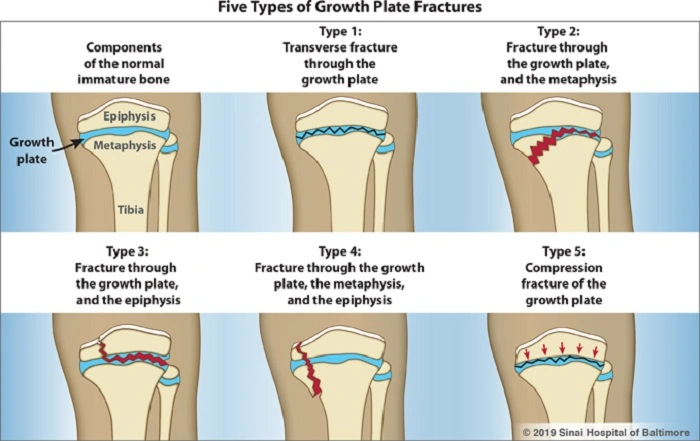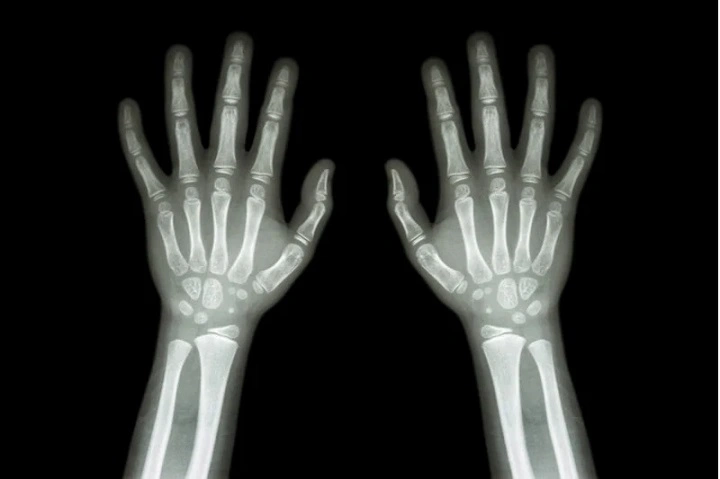Height is likely one of the most common teenage life inquiries. Teenagers might ask themselves the following questions: Will I keep growing taller? How much longer until I achieve full growth? When do your growth plates close?
Growth plates, or epiphyseal plates, also determine how tall a person will be. They are the areas in which there is proliferating tissue at the ends of the long bones. There can be no more growth in height once they are closed. It is useful to control expectations, plan for development for sport, and offer long-term bone health if a person knows when this is occurring.
This tutorial explains what growth plates are, when they close, who or what decides the time, and how you can protect them.
What Are Growth Plates
Growth plates are sections of cartilage at the end of bones. They are soft in children and teenagers to allow bones to grow longer.
Structure of Growth Plates
- Growth plates are found at the ends of long bones such as femur, tibia, radius, and humerus
- Made up of cartilage cells reproducing and ossifying into bone
- Regulated by hormones, genetics, and nutrition
Bones grow longer due to the openness of the plates. Once closed, growth ceases.
When Do Plates Close

The sequence of closing also differs with age, sex, and independent growth.
Average Closure Ages
- Growth plates fuse between 13 to 16 in females
- Plates close a bit later in boys, at 15 and 18
- Some growth plates, for example, in the collarbone, finish closing as late as 21–25
Table: Growth Plate Closure Ages
| Bone | Girls (average age) | Boys (average age) |
| Hands and feet | 13–15 | 15–17 |
| Arms (radius/ulna) | 14–16 | 16–18 |
| Legs (femur/tibia) | 14–16 | 16–18 |
| Clavicle (collarbone) | 18–20 | 21–25 |
Key Point
Once growth plates close, a person cannot grow taller.
Evidence That Growth Plates Are Closing
- Slowing of growth in height
- Puberty milestones (menstruation in girls, deep voice in boys)
- X-ray showing plates have joined together
- More adult body proportions
Doctors verify the closure of growth plates by looking at an X-ray of the pelvis, knee, or wrist.
Boys vs. Girls
Girls mature earlier and consequently close earlier. Boys, being later in development, take time to develop, and hence the reason why the male average height exceeds female height.
Table: Growth Plate Closure by Sex
| Factor | Girls | Boys |
| Onset of puberty | 9–13 years | 11–15 years |
| Growth spurt | 10–14 years | 12–16 years |
| Closure of plate | 13–16 years | 15–18 years |
Factors That Influence Growth Plate Closure
Genetics
Genetics also controls timing. The offspring will be later in maturing if the parents also matured late in life.
Hormones
The growth hormone, estrogen, and testosterone hormones control bone growth. Retarded or premature puberty affects the timing of closure.
Nutrition
- Adequate dietary intake of protein, calcium, and vitamin D and regular meals increase bone growth
- Malnutrition results in premature closure and reduced final height
Physical Activity
- Regular training ensures normal growth
- Excessive overtraining or repetitive trauma will most likely result in growth plate injury
Medical Conditions
- Endocrine disease influences closure
- Chronic disease can lead to delayed growth
- Short stature is a sign of growth hormone deficiency
Sports and Growth Plates
Risks in Young Athletes
Growth plate injury is prevalent among adolescent football players, basketball players, gymnasts, and runners. These result in asymmetrical growth or premature closure.
Prevention Tips
- Warm up and stretch properly
- Wear protective equipment
- Don’t overdo it
- Report joint pain to a physician
Myths About Growth Plates
- Myth: One will grow taller by stretching.
It will improve posture but will not reopen closed growth plates. - Myth: Growth extension is possible with supplements.
When plates close, no pill can lengthen bone. - Myth: Weightlifting will stop growing.
Safe, supervised strengthening will not injure growth plates. Poor technique injuries will.
Growth Plate Injuries

Common Types
- Fractures
- Stress injuries
- Inflammation
Treatment
- Rest and immobilization
- Physical therapy
- Surgery in extreme worst-case scenarios
Teens’ growth plate protection prevents pathological bone and growth height.
Also Read: I Have High Cholesterol But Don’t Want to Take Statins: Natural Solutions That Work
How to Determine if Your Growth Plates Have Been Opened Up
A doctor’s X-ray is the only way to tell. A wrist or knee X-ray will show if plates are still open. Doctors may order a bone age study to evaluate both the chronological and biological ages.
Height Potential and Growth Plates
Potential for height is caused by heredity via genes, diet, and when the plates close. One cannot naturally gain height after plate closure. Lean muscles, leanness, and good posture can make the difference in appearance without extra inches.
Healthy Lifestyle Habits for Growing Plates
Table: Lifestyle Factors and Effect
| Factor | Effect on Growing Plates |
| Balanced diet | Helps with regular bone growth |
| Adequate sleep | Nighttime growth hormone release |
| Regular exercise | Promotes overall bone density |
| No smoking/drugs | Avoids premature closure |
| Healthy weight | Less stress on plates |
Patient Stories
- John, 14: His parents knew he was shorter than other boys. His growth plates were open, a bone age test showed. Six inches taller in three years with nutritional improvement.
- Maria, 16: She hurt her knee playing basketball. Doctors said it was a growth plate fracture. Her leg healed normally from the treatment, but it was a lesson that she learned safety first.
- David, age 19: Was worried that he was shorter than his friends. Plates closed, as verified by X-ray. Instead of pursuing repairs to height, he developed fitness and posture, and it improved his self-esteem.
FAQs On Growth Plates
At what age do growth plates close in females?
They close between the ages of 13 and 16, depending on when they start puberty.
At what age do growth plates close in males?
Usually 15 to 18, but collarbone plates later.
Do plates ever re-open?
No. They cannot once they have closed.
Do plates close earlier if you don’t eat well?
Yes, illness and starvation can close them earlier.
How do I know if my plates are open or closed?
Only an X-ray can indicate if plates are open.
Conclusion
So how old are your growth plates when they finish closing? Most girls, 13 to 16. Most boys, 15 to 18, but some are a bit later. Genes, hormones, diet, lifestyle determine timing. Height is finalized once growth plates close.
Knowledge about the process gives realistic expectations and promotes a healthy lifestyle during growing years. Care of growth plates through medical care, exercise, and nutrition gives not only maximum height but also lifelong bone density.


